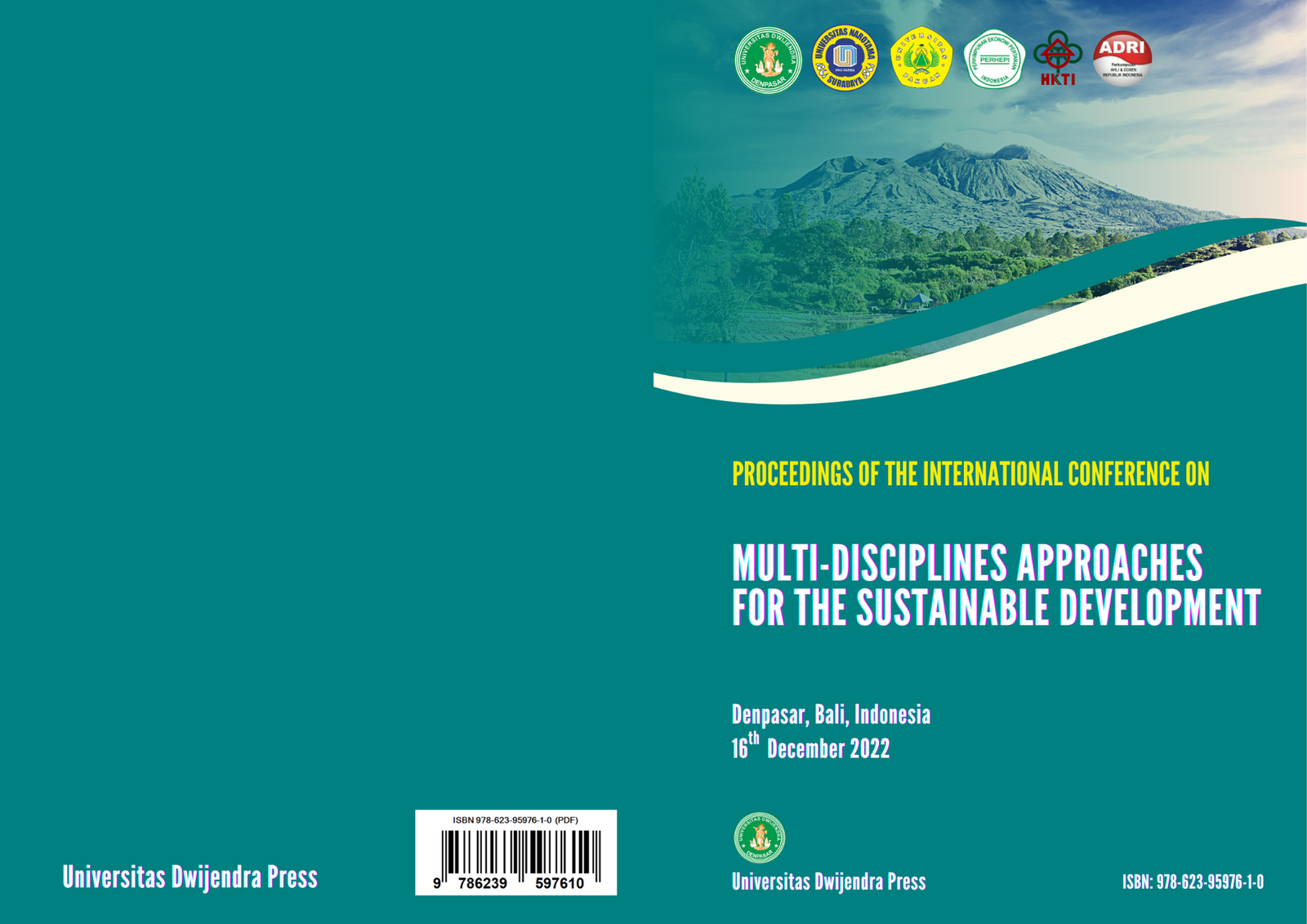POTENTIAL OF BALI'S INDIGENOUS RHIZOBACTERIAL AS PGPR IN SOYBEAN PLANTS
Abstract
Soybean is a strategic commodity with very high demand with huge variations and high value of processed products ranging from feed, food, energy, and industrial raw material. This study was done to determine potential use of Bali’s indigenous rhizobacterial to promote growth and increase the yield of soybean under the greenhouse experiment. Five isolates of Bali’s indigenous rhizobacterial namely FN1, FN2, FL3, FL4, and FL5 were tested for their effectiveness to promote the growth and increase the yield of soybean. Treatments with isolates of Bali’s indigenous rhizobacterial significantly improved the growth of soybean, in which the plant height, diameter of stem, the fresh and dry weight of shoot, the fresh and dry weight of root, content of chlorophyll in the leaf, and the number of nodule significantly (p<0.05) higher on treated plants when compared to control. These treatments were also significantly increased the yield. The number of pod per plant, the weight of pod per plant and content of protein in the seed of treated plants were significantly higher than that of control. Molecular identification based on 16S rRNA gene sequence showed that FN1 and FL5 isolate were similar to Kleibsiella pneumonia with the similarity level at 98%. FN2 isolate was similar to Kleibsiellavariicolawith the similarity level at 99%, FL3 isolate was similar to Proteus mirabilis with the similarity level at 100%, and FL4 isolate was similar to Providenciarettgeri with the similarity level at 99%. These Bali’s indigenous rhizobacteria may be further developed as plant growth-promoting agents to increase the yield andprotein content of soybean.
References
KhalimidanSuprapta. 2011. Induction of plant resistance against Soybean stunt virus using some formulations of Pseudomonas aeruginosa. J.ISSASS 17(1):98- 105
Khalimi, K.; D.N. Suprapta and Y. Nitta. 2012.Effect of Pantoeaagglomerans on Growth Promotion and Yield of Rice. Agriculturalscienceresearchjournals. Vol. 2 (5).pp.240 – 249.
Maxi, I. dan Adhi, W. 2009. Kedelai jumbo di pasarJepang. http://www.majalah trust.com/bisnis/peluang/416.php. diaksesbulanmaret 2009
Masuda, R., K. Hashizume, and K. Kaneko. 1988. Effect of holding time before freezing on the constituents and the flavor of frozen green soybeans. Nihon Shokuhin Kogyo Gakkaishi 35:763-770.
Nguyen, V.Q. 2001. Soybean(vegetable green soybean). In The Rural Industrial. p. 49-56. http://attar.ncut. org/attar-pub/Soybean.html
Ryu, C.-M., C.-H. Hu, M. S. Reddy, and J. W. Kloepper.2003. Different signaling pathways of induced resistance by bacteria in Arabidopsis thaliana against two pathovars of Pseudomonas syringae. New Phytol. 160: 413-420.
Rukmana R dan Yuniarsih Y. 1996. Kedelai Budidaya dan Pascapanen. Yogyakarta : Kanisius.
Ryu, C. M., M. A. Farag, C. H. Hu, M. S. Reddy, H. X. Wei, P.W. Pare, and J. W. Kloepper. 2003. Bacterial volatiles promote growth in Arabidopsis. Proc. Natl. Acad. Sci. U.S.A. 100:4927-4932.
Rudrappa T.; M. L. Biedrzycki; S.G. Kunjeti; N. M. Donofrio; K. J. Czymmek; Paul W. and H. P. Bais. 2010. The Bacterial Elicitor Acetoin Induces Systemic Resistance in Arabidopsis thaliana. Department of Plant and Soil Sciences. Delaware Biotechnology Institute; Newark, DE USA.
Shanmugasundaram S, ST Cheng, MT Huang, ML Yan. 1991. Varietal improvement of soybean in Taiwan. p. 30-42. In: Shanmugasundaram (Ed.). Shan Hua. Taiwan: Soybean AVRDC Pub.No. 91-346, 151 p.
Suprapta, DN., Maulina, NMI, Khalimi, K. 2014. Effectiveness of Enterobacter cloacae to Promote Growth and Increase the Yield of Rice. Journal of Biology, Agriculture and Healthcare 4 (1): 2224-3208
Sudaryanto, T., IW. Rusastra, danSaptana. 2001. Perspektifpengembanganekonomikedelaidi Indonesia. Forum Agro Ekonomi 19(1):1−20.
Suhartono, M. T. 1989. Enzim dan Bioteknologi. Departemen Pendidikan dan Kebudayaan Direktorat Jenderal Pendidikan Tinggi Antar Universitas Bioteknologi. Institut Pertanian Bogor.
Sumner, J.B. 1926. Urease. http://www.britannica.com/eb/article-9074458/urease#74436.hook
Taghavi, S.; C. Garafola; S. Monchy; L. Newman; A. Hoffman; N. Weyens; T. Barac; J. Vangronsveld; Lelie and D. Van Der. 2009. Genome Survey and Characterization of Endophytic Bacteria Exhibiting a Beneficial Effect on Growth and Development of Poplar Trees. applied and Environmental Microbiology, Feb. 2009, p. 748-757. Vol. 75, No. 3.
Wang, H.L., G.C. Mustakas, W.J. Wolf, L.C. Wang, C.W. Hesseltine, and E.B. Bagley. 1979. Soybeans as human food-unprocessed and simply processed. USDA Utilization Report
Wuner,M.2012.budidayakedelaijepangSoybean.http://wunermikhael.blogspot.com/2012/04/budidaya-kedelai-jepang-Soybean.html.




